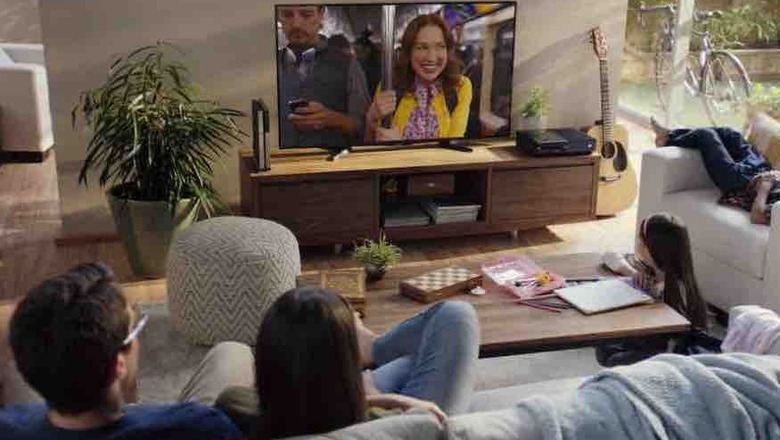
views
If smartphone and internet users in India get bundled subscriptions for their favorite streaming services with their mobile or broadband connections, they do not mind paying more for the convenience. In fact, 44% of mobile and broadband subscribers spend more on a higher tariff plan tier because it may have more OTT video streaming subscriptions bundled, suggests the latest Ovum-Amdocs survey.
The link between streaming service subscriptions and mobile as well as broadband connections runs even deeper, with 47% subscribers less likely to switch service providers if they get their preferred OTT streaming services. At the same time, 30% of respondents would not mind switching to another operator if their current operator doesn’t offer their preferred streaming subscriptions. In India, the biggest video streaming services include Netflix, Amazon Prime Video, Hotstar, Sony Liv, Voot, Zee 5 and Eros Now. The report also suggests that as many as 50% of users are willing to pay for premium media services via their carrier bill if offered at a discount or with an extended free trial.
As many as 4,000 consumers were surveyed in India, Australia, Singapore, Philippines and Thailand, of which more than half were from India itself. ““Our research shows that this market is willing to spend even more on their monthly telecom bill in exchange for the right bundle, with the right offer, at the right price point,” says Pankaj Lamba, Customer Business Executive, APAC, Amdocs. “India is one of the hottest markets for OTT media services and carrier-OTT partnerships in the region, registering the strongest retention and user acquisition potential from bundling,” says Guillermo Escofet, Principal Analyst, Ovum.
With as many as 7 leading OTT video streaming platforms available in India, the Ovum-Amdocs survey suggests that Indians prefer to subscribe to more than one video streaming service. As many as 42% subscribers pay for more than one video streaming service because they feel no one streaming platform offers all the content they want. At the same time, 56% of respondents also said they need to subscribe to multiple options between the likes of Netflix, Amazon Prime Video, Hotstar, Sony Liv, Voot, Zee 5 and Eros Now because every member of the family likes different content.
The report does throw up some very interesting stats. Sony Liv gets 50% of its total subscriptions from bundles with mobile, broadband or TV bills. That is the most for any streaming service in India, with Voot in second with 38% while Zee5 follows at 34%. Amazon Prime, which includes the Amazon Prime Video streaming service, gets 25% of its total subscriptions from media bundles—though it is quite commonly found in tariff plans offered by Airtel and Vodafone Idea. For some reason, the survey calculates Amazon Prime’s conversion separately at 15%, but it would be prudent to add the 25% and 15% together under one umbrella. Netflix gets just 19% of its subscribers from media bundles.
The Ovum-Amdocs survey perhaps raises a very important shortcoming in the Indian OTT video streaming ecosystem—the lack of a pay-per-view option. As many as 69% of those surveyed would not mind paying for a specific content, instead of a full month of subscription. That stems from the fact that Indians on an average pay Rs 306 per month for video streaming services. “The maximum consumers would willingly pay for a monthly online video subscription is: Rs 50-200 (22%); Rs 201-400 (30%); Rs 401-600 (22%); Rs 600-800 (12%); Rs 800 (7%),” says the survey.
But what about the data that streaming apps may get access to, perhaps for targeted advertising, in return for offering services at a possible discount? As many as 70% consumers wouldn’t mind paying less for a service, even if they have to sit through adverts. About 16% users are okay with sharing personal data if it isn’t personally identifiable. But 12% consumers are very clear that they don’t want to share any personal data, even if that means sitting through adverts.
The media bundling scenario in India has become quite popular over the past year. For instance, Airtel with its prepaid mobile, postpaid mobile and Xstream home broadband and Vodafone with its prepaid and postpaid mobile bill plans, have been bundling subscriptions to services such as Netflix, Amazon Prime Video, Zee5 and more. The advantage for operators is that it allows them to offer upgraded tariff plans to users, which in turn result in better average revenue per user (ARPU) stats. This also increases data consumption and allows service providers to position themselves as more than just telecom companies.
For OTT streaming services, this is a great opportunity to get more subscribers on board, while spending significantly lower in terms of subscriber acquisition costs. They also get better retention figures, as a subscriber is likely to stay as an active subscriber for longer if the subscription is bundled. OTT companies don’t need to pay for advertising, and they can attempt to crack newer markets.




















Comments
0 comment